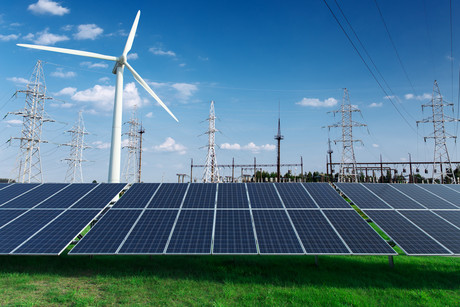NSW prepares grid for the future

The NSW Government has released a Transmission Infrastructure Strategy, which aims to create a modernised grid that can deliver reliable and affordable energy to the state. In particular, it will focus on boosting NSW’s interconnection with neighbouring states, increasing energy capacity and streamlining regulation.
NSW is undergoing an energy sector transformation driven by technology and innovation. The strategy is the government’s plan to unlock private sector investment in priority transmission infrastructure projects, which can deliver least-cost energy to customers to 2040 and beyond.
While the uptake in solar to power households and businesses has helped reduce the amount of energy consumers use from the grid, it is not enough. NSW Energy Minister Don Harwin said there was more than 20,000 MW of large-scale energy projects in the NSW pipeline in October, representing more than $27 billion in potential investment, but only one in 20 projects manages to connect to the grid.
The Transmission Infrastructure Strategy will increase grid capacity in energy zones in the state’s central-west, south-west and New England regions. The energy zones will become a focus for new energy generation, leverage up to $23 billion in private sector investment and support up to 2000 construction jobs each year.
The NSW Government will also accelerate the development of four priority projects by TransGrid that will increase access to existing energy supply from Queensland, Victoria, South Australia and the Snowy region. These include: upgrading the existing Victoria–NSW and Queensland–NSW Interconnectors by 2022; a new South Australia–NSW Interconnector from Robertstown in SA to Wagga Wagga, NSW by 2023; and new transmission from Snowy Hydro to Bannaby, via Wagga Wagga, by 2024.
According to the strategy overview, it will unlock up to 3200 MW of cheaper energy supply, with around 1100 MW firm supply available to meet peak demand before 2025. It also said “interconnection projects more than pay for themselves”, with the Australian Energy Market Operator’s (AEMO) July 2018 Integrated System Plan (ISP) stating it could deliver $1.2 billion net benefit across the National Electricity Market (NEM).
Energy Networks Australia stated NSW is at the centre of the NEM and is critical to the development of a more connected energy future. It welcomed the strategy, claiming it is a step towards a more integrated energy system that can benefit customers by creating a more resilient grid and more competitive wholesale markets.
“Fast-tracking the four key projects outlined in the strategy will bolster the grid’s capacity and put downwards pressure on prices — a priority for network businesses across Australia,” said Energy Networks Australia CEO Andrew Dillon.
He said the sequential nature of current regulatory arrangements was slow and unsuited to the transformation underway in electricity generation.
“By providing a funding guarantee for preliminary planning work, the NSW Government can fast-track priority projects while ensuring projects will only proceed where the benefits for consumers clearly outweigh the costs.
“Networks want to keep costs as low as possible while ensuring new renewable generation can be reliably integrated into our grid. The NSW plan will help achieve this,” Dillon said.
Keeping Australia's power systems stable: AEMO report
The 2025 Transition Plan for System Security explains how the nation can meet its system security...
Marinus Link completes Tasmanian approvals process
Tasmania's Environment Protection Authority has assessed the two Tasmanian components of...
Is grid connection holding up the energy transition?
A recent survey has identified grid connection delays as a major issue for Australia's...



